Welcoming a new member into your family is an extraordinary journey filled with love and joy. As a new mom, you’re embarking on a remarkable adventure with its own challenges. One of the most crucial aspects of this journey is nourishing your baby; for many mothers, breastfeeding is a significant part of that bond.
However, we understand that life’s demands and individual circumstances may require flexibility. This is where breast pumps come to your rescue – as versatile tools that empower you to provide the best nutrition for your baby while maintaining your daily routine.
In this comprehensive guide, we’ll walk you through the world of breast pumps for new moms, helping you make informed decisions and confidently embark on your breastfeeding journey.
Breast Pumps for New Moms: Importance and Selection

Photo: thebabyswag.com
Breast pumps are remarkable tools that bridge the realms of motherhood and modern living. They can grant new moms the flexibility and freedom to nourish their babies with breast milk, even amidst the dynamic demands of daily life.
Beyond the serene moments of nursing, breast pumps empower you to provide the gift of breast milk when you’re away, ensuring your baby’s well-being and nurturing connection are never compromised.
Factors to Consider When Choosing a Breast Pump
Before diving into the specifics, let’s discuss the factors that should guide your decision when selecting a breast pump. Your comfort, lifestyle, and breastfeeding goals are paramount. Consider how often you’ll need to pump, where you’ll be using the pump, and whether you’ll require a hands-free option.
Remember that the right breast pump can significantly enhance your breastfeeding experience, allowing you to provide your baby with the nourishment they need, even when life gets busy.
Related:
- How to Increase & Maintain Breast Milk Supply: Tips from a Holistic Certified Nutritionist
- Breastfeeding Nutrition Advice from a Certified Nutritionist
- Complete Hospital Bag Checklist for Expectant Moms: What You Need & What You Don’t
Understanding Breast Pumps: Types and Uses
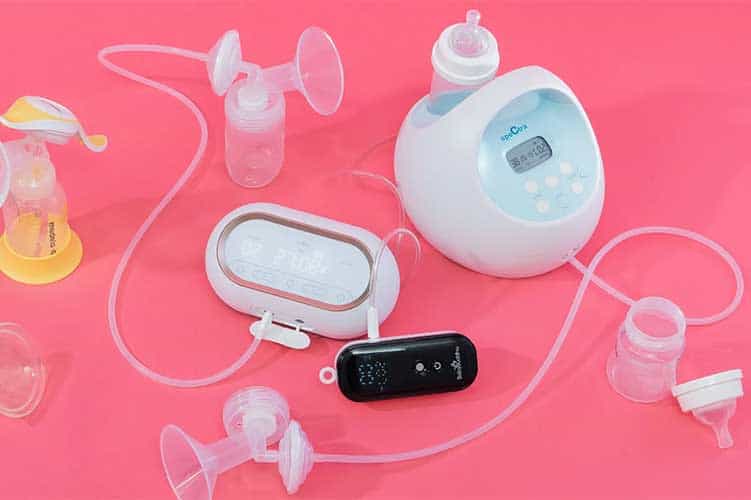
Photo: nytimes.com
Understanding the various types of breast pumps for new moms empowers you to select the one that suits your lifestyle and needs best. Whether you opt for the intimate connection of a manual pump, the efficiency of an electric pump, the power of a hospital-grade pump, or the flexibility of a wearable pump, each choice is a step toward providing the best nutrition for your baby while embracing the beautiful journey of motherhood.
Manual Breast Pumps: Pros and Cons
Manual breast pumps offer a simple, quiet, affordable solution for occasional pumping. While they require more time and effort than electric options, they provide a sense of control and connection to your body’s natural rhythm. Perfect for on-the-go moms seeking flexibility.
Electric Breast Pumps: Pros and Cons
Electric breast pumps are a popular choice for their efficiency and comfort. With adjustable settings, they mimic a baby’s sucking pattern, ensuring a quicker and more comprehensive pumping session. They offer hands-free options, making it easier to multitask while pumping. It is ideal for moms who need to pump regularly or want to express larger amounts of milk. However, they can be bulkier and require a power source, which might limit their portability.
Hospital-grade Breast Pumps: Pros and Cons
Hospital-grade breast pumps are the powerhouses of pumping. Their advanced technology ensures efficient milk extraction and can be a game-changer in challenging situations. Designed for maximum output, they’re excellent for moms facing challenges like low milk supply or preterm births.
Hospital-grade pumps are typically available for rent and provide both single and double-pumping options. However, they can be larger and heavier than other types of pumps and may come at a higher cost.
Wearable Breast Pumps: Pros and Cons
Wearable breast pumps like the Momcozy S9 and Elvie Stride offer several benefits for nursing mothers, particularly those who need to multitask or are often on the go. These pumps are designed to be worn inside a bra, enabling mothers to move freely and continue their daily tasks without being confined to one spot for pumping. This mobility aspect is especially beneficial for working mothers who may struggle to carve out stationary time during a busy day.
The Elvie Stride stands out due to its quiet operation, making it less disruptive in a work environment or public setting. It also includes tubes that can be easily clipped to clothing or a fanny pack for added convenience. Conversely, the Momcozy S9 offers a tube-free design, which may be simpler to set up and wear, though it is noted to be slightly louder than the Elvie Stride. However, the noise level difference between the two models is relatively minor.
Both models are compact and discreet enough to transport easily in a purse or tote, ensuring that mothers can carry them anywhere without hassle. Although wearable pumps might not be ideal for every mother, they serve as an effective solution for those seeking flexibility and ease during their pumping sessions, eliminating the constraint of being tethered to a traditional pump.
Manual Breast Pumps for New Moms: Simplicity and Affordability
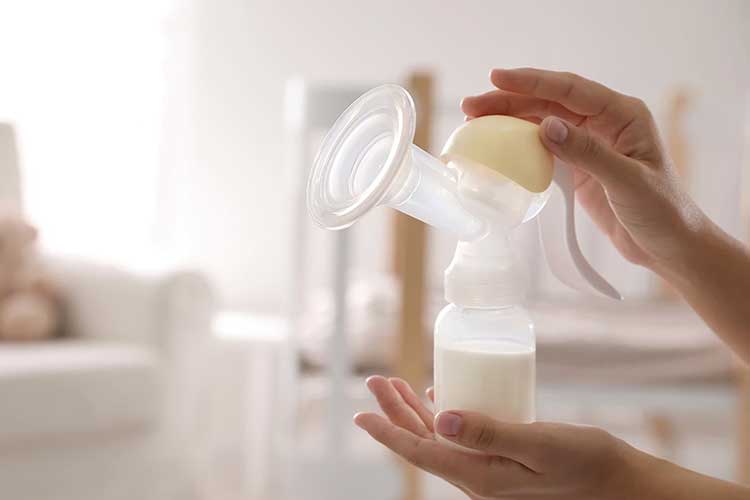
Photo: thebump.com
When it comes to embracing the beauty of motherhood, manual breast pumps offer a gentle and intimate way to provide for your baby. These pumps harness the power of your own hands, allowing you to control the rhythm and pace of expression.
Whether you’re seeking a backup for occasional use or an option that keeps you in tune with your body’s natural cues, manual breast pumps offer a unique connection to the breastfeeding process.
Manual pumps offer a beautiful blend of simplicity, control, and connection that can make your breastfeeding journey even more special.
Review of Top Models
Medela Harmony
The Medela Harmony is a trusted companion for new moms seeking simplicity and effectiveness. Its ergonomic design ensures comfortable pumping, while its two-phase expression technology mimics your baby’s natural nursing rhythm.
Lansinoh Manual Pump
The Lansinoh Manual Pump boasts a unique ComfortSeal cushion that creates a secure seal for efficient pumping. Its compact design and ease of use make it a top contender for moms on the move.
Haakaa Silicone Breast Pump
The Haakaa Breast Pump’s innovative design, crafted from soft silicone, draws milk using gentle suction, capturing let-downs and offering a hassle-free solution for nursing moms.
Tips for Successful Manual Pumping
While manual pumping may require a bit more physical effort, there are a few tips that can help optimize your experience:
- Find a comfortable and quiet space where you can relax and focus on the pumping process.
- Gently massage your breasts before and during pumping to stimulate milk flow.
- Experiment with different suction levels and rhythms to find what works best for you.
- Use warm compresses before pumping to encourage let-downs and promote milk flow.
- Consider combining manual pumping with nursing to enhance milk production and storage.
Electric Breast Pumps for New Moms: Speed and Convenience

Photo: pregnancy.com.au
Whether juggling work, caring for your little one, or simply seeking to optimize your pumping routine, electric breast pumps provide an efficient solution that allows you to nourish your baby while embracing all the adventures of your busy life.
Designed to mimic your baby’s natural sucking pattern, electric pumps efficiently stimulate milk flow and allow you to express milk from both breasts simultaneously.
Their adjustable settings and automatic operation make them a popular choice for moms seeking a balance between the demands of motherhood and their daily routines.
Review of Top Models
Spectra S1 Plus
The Spectra S1 Plus is a powerhouse known for its hospital-grade performance. With customizable settings and a rechargeable battery, it ensures comfort and efficiency wherever you go.
Medela Pump in Style Advanced
The Medela Pump in Style Advanced is a versatile workhorse with a double-pumping design, adjustable speed, and vacuum settings. Its discreet design makes it suitable for both home and office use.
Elvie Pump
The Elvie Pump revolutionizes discreet pumping with wireless, silent operation. Express milk confidently while its app tracks sessions, keeping you informed about real-time supply and patterns.
Hospital-grade Breast Pumps For New Moms: Maximum Power and Comfort
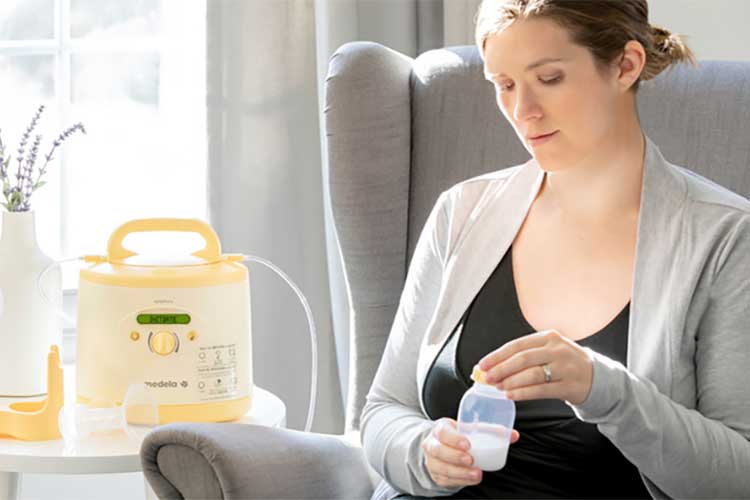
Photo: aeroflowbreastpumps.com
When faced with unique breastfeeding challenges, hospital-grade breast pumps step onto the stage as powerful allies.
Designed to deliver maximum efficiency and comfort, these pumps are often recommended for mothers with specific needs, such as establishing or increasing milk supply, premature infants, or medical conditions that demand a higher level of performance.
Their advanced technology and robust motor power ensure you can optimize your milk expression journey despite difficulties.
Review of Top Models
Medela Symphony
The Medela Symphony is a pinnacle of hospital-grade breast pumps renowned for its clinical excellence. 2-Phase Expression technology mirroring natural nursing fosters milk flow and aids milk supply establishment. Trusted support for mothers needing that extra care.
Spectra S2 Plus
The Spectra S2 Plus combines hospital-grade performance with user-friendly features. Its quiet operation, adjustable settings, and closed system design ensure a hygienic and efficient pumping experience.
Wearable Breast Pumps For New Moms: Freedom and Flexibility

Photo: trendhunter.com
Wearable breast pumps empower you to reclaim your time and integrate pumping seamlessly into your life. With these devices, you can confidently venture out into the world while nourishing your baby, embracing the true spirit of modern motherhood.
These innovative devices seamlessly integrate into your daily routine, allowing you to express milk discreetly, effortlessly, and without being tethered to a traditional pump.
Whether you’re a busy professional, an active adventurer, or a multitasking mom, wearable breast pumps empower you to embrace life while providing for your baby.
Review of Top Models
Willow Generation 3
The Willow Generation 3 takes wearable pumping to the next level. It boasts spill-proof bags, a sleek design, and adjustable suction for exceptional comfort and flexibility. Whisper-quiet operation safeguards privacy, while app monitoring empowers you in your pumping journey.
Elvie Pump
The Elvie Pump’s silent operation and wireless design make it a favorite among moms seeking a truly hands-free experience. Its app connectivity allows you to track your pumping sessions and milk supply effortlessly.
Evaluating the Portability of Breast Pumps
When determining the portability of a breast pump, several factors are crucial to consider. Firstly, the overall weight of the pump is important as it affects how easy it is to transport. Additionally, consider the volume and number of accessories required, as a higher number of parts can complicate mobility. The compactness of the pump is also vital; smaller pumps are generally more portable. For instance, some models stand out for their lightweight and minimalistic design which significantly enhances their portability. Manual pumps often are advantageous in this regard due to their simpler construction and fewer components, making them not only easier to carry but also quieter during use.
The Important Silent Operation for Breast Pump
Quiet operation is a critical feature in breast pumps because a noisy pump can disrupt the calm environment, which is beneficial for effective milk production. Noise can be particularly distracting or bothersome in quiet settings, such as during nighttime sessions next to a sleeping partner or in workplaces where discretion is necessary. A quieter breast pump helps maintain a peaceful atmosphere conducive to relaxation and can facilitate a more effective pumping experience.
Among the various breast pumps evaluated for noise levels during operational use, the Haakaa Gen 1 was noted for its exceptionally quiet performance, primarily because it lacks a motor, eliminating mechanical noise entirely. The Elvie Stride also received high marks for its subdued sound profile. It operates with minimal noise, often comparable to a soft “shhh,” making it less likely to be heard over ambient sounds in most environments. This feature underscores its suitability for discreet pumping, whether at home or in public.
Conversely, the Medela Pump in Style with Max Flow generated more noise during operation, specifically emitting a thumping and rattling sound. Its noise level was measured similarly to normal conversation or background household noises like a running refrigerator. This indicates that while it is not excessively loud, its noise level is still significant enough to be noticeable.
Other pumps, like the Baby Buddha and the BellaBaby Double Electric Breast Pump, while not producing any distinctive or abnormal sounds, were also found to be louder than some of their counterparts. This suggests that while they function effectively, the noise level might be a consideration for users seeking a quieter experience.
Insurance and Breast Pumps: What New Moms Need to Know

Photo: goodhousekeeping.com
Insurance Coverage for Breast Pumps
Exploring insurance coverage may seem complex, yet for breast pumps, it’s a vital path. Many health plans include pumps in maternity benefits, easing the high-quality pump expense.
By leveraging this benefit, you’re taking proactive steps to prioritize your baby’s health and well-being, ensuring you have the tools to embark on a successful breastfeeding experience.
How to Get a Breast Pump Through Insurance
Acquiring breast pumps for new moms through insurance involves a few key steps. Here is the suggested course:
First, contact your insurance provider to understand the specific coverage details and requirements. In most cases, you’ll need a prescription from your healthcare provider indicating the medical necessity for a breast pump.
Once you have the necessary documentation, you can choose from a selection of approved breast pump providers that partner with your insurance plan.
These providers will guide you through selecting a pump that aligns with your needs and submitting the required paperwork to ensure a seamless and hassle-free experience.
Breast Pump Accessories and Cleaning Supplies
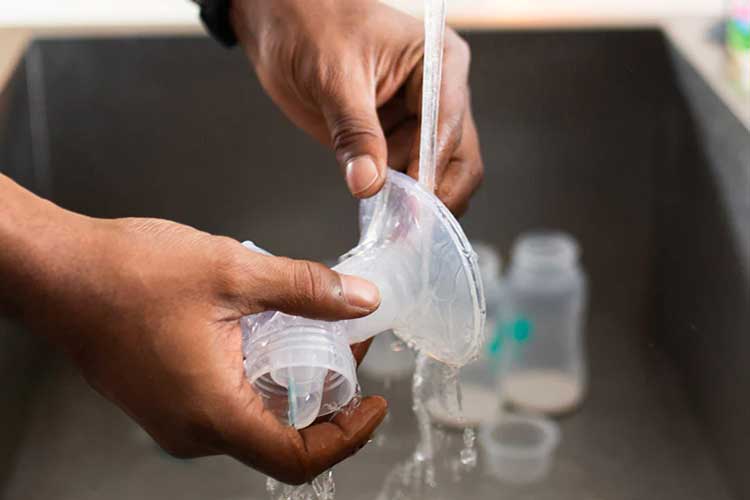
Photo: evenflofeeding.com
Essential Accessories for Pumping
As you embark on your breastfeeding journey, the right accessories can make a world of difference in your pumping experience. A well-equipped pumping toolkit ensures efficiency, comfort, and convenience.
- Hands-free pumping bras allow you to multitask or simply relax during your pumping sessions.
- Extra sets of breast shields and valves ensure you always have clean and sterile components ready for use.
- Breast milk storage bags or containers will help to safely preserve your expressed milk and build a stash for future use.
- Nipple creams and cooling pads provide soothing relief for tender nipples, helping you stay comfortable and focused on providing the best care for your baby.
Proper Cleaning and Maintenance of Breast Pumps
Maintaining the hygiene of your breast pump is paramount to the safety of your baby’s milk supply. Here are some tips you might find helpful:
- After each pumping session, disassemble all parts that come into contact with milk and wash them in warm, soapy water. Thoroughly rinse and air-dry the components before reassembling.
- Regularly sterilize the parts using methods recommended by the manufacturer, such as steam sterilization or boiling.
- Avoid using harsh cleaning agents or abrasive materials that could damage the pump components.
- Proper maintenance extends beyond cleaning. Regularly inspect the pump’s tubing, valves, and membranes for signs of wear or damage. Replace these parts as needed to ensure optimal performance.
Keeping your breast pump in excellent condition not only safeguards your baby’s health but also prolongs the life of your pump, ensuring it remains a reliable tool throughout your breastfeeding journey.
Troubleshooting Common Breast Pump Problems

Photo: milkbarnewzealand.com
Tips and Tricks for Resolving Common Breast Pump Issues
Every pumping journey may encounter a few bumps along the way. From low milk output to discomfort, we’ll address common problems and offer practical solutions to help you overcome them:
- Low Milk Output: Practice relaxation techniques, ensure proper nutrition and hydration, and consider power pumping to stimulate milk supply. Creating a comfortable and stress-free environment can encourage better milk flow.
- Pain or Discomfort: Check that your breast shields fit properly and adjust the suction level to a comfortable setting. Gently massaging your breasts before pumping and applying warm compresses can aid milk let-down and alleviate discomfort.
- Suction Loss or Leaking: Inspect all connections for a secure fit and ensure that all pump parts are assembled correctly. If using a double pump, make sure both sides are balanced in terms of suction and milk flow.
- Engorgement: To ease engorgement, use a warm compress before pumping and a cold compress afterward. Gradually increase suction levels to avoid discomfort and consider pumping more frequently for shorter sessions.
- Uneven Pumping: If one breast yields more milk than the other, try starting each pumping session with the less productive breast to encourage balanced output. Adjust the suction settings on each side independently if necessary.
Remember that seeking guidance from a lactation consultant or healthcare provider can provide invaluable support and personalized solutions to overcome any hurdles you may encounter.
Safety and Hygiene Tips for Using Breast Pumps

Photo: wonderbaby.org
Importance of Hygiene in Pumping
Breast milk is a precious source of nourishment, and maintaining cleanliness throughout the pumping process is essential.
- Before each pumping session, wash your hands thoroughly with soap and water.
- Clean and sanitize all pump parts that come into contact with breast milk, such as breast shields, valves, and bottles.
- Follow the manufacturer’s guidelines for proper cleaning and sterilization methods to prevent the growth of harmful bacteria.
Safety Tips for Storing and Using Breast Milk
Properly storing and handling expressed breast milk is essential to preserve its nutritional value and ensure your baby’s safety. We’ll provide you with guidelines for safe storage and usage:
- Always label containers with the date of expression to track freshness.
- When storing breast milk in the refrigerator, use the back of the refrigerator where temperatures are more consistent.
- In the freezer, keep breast milk away from the door to minimize temperature fluctuations.
- Thaw frozen breast milk in the refrigerator or under cool running water, avoiding microwaves to prevent uneven heating that could destroy valuable nutrients.
By adhering to these safety and hygiene practices, you’re not only preserving the integrity of your expressed milk but also providing your baby with the best possible start on their journey of growth and development.
Conclusion
And there you have it, this comprehensive guide has walked hand in hand with you, unveiling the world of breast pumps for new moms and empowering you with knowledge.
From the rhythmic embrace of manual pumping to the efficiency of electric counterparts, the power of hospital-grade pumps, and the liberation of wearable innovations, each path embodies your commitment to providing the best for your baby.
With a trusted breast pump in hand and a heart full of devotion, you embark on a journey where modern convenience converges with timeless bonds. Your path is illuminated, and the possibilities for both you and your baby are limitless!
Frequently Asked Questions
What should I look for when buying a breast pump?
When purchasing a breast pump, consider factors such as your pumping frequency, lifestyle, and comfort. Look for adjustable suction settings, a hygienic closed system, ease of cleaning, and compatibility with various breast shield sizes. Also, explore whether the pump offers different modes for stimulation and expression to mimic your baby’s natural feeding rhythm.
How do I choose between manual and electric breast pumps?
Your choice between manual and electric pumps depends on your needs and preferences. Manual pumps offer simplicity, portability, and a direct connection to your pumping experience. Electric pumps provide efficiency, adjustable settings, and hands-free options for multitasking. Consider your daily routine and how often you plan to pump.
Can I get a breast pump through my health insurance?
Many health insurance plans cover the cost of breast pumps for new moms as part of their maternity benefits. Contact your insurance provider to understand your coverage options and the process for obtaining a breast pump. Be prepared to provide necessary documentation, such as a prescription from your healthcare provider, to facilitate the insurance claim.
How often should I clean my breast pump?
Cleaning your breast pump is crucial to maintain hygiene and ensure the safety of your expressed milk. After each use, disassemble the pump and wash all parts that come into contact with milk in warm, soapy water. Thoroughly rinse and air-dry the components. Additionally, sterilize the parts once a day, especially if your baby is premature or has special medical needs.
Are all breast pumps safe to use?
Breast pumps from reputable manufacturers are generally safe to use. Look for pumps with FDA approval and ensure they have a hygienic closed system that prevents milk from entering the tubing. Regular maintenance, proper cleaning, and following the manufacturer’s instructions contribute to the safe use of your breast pump.
Can I use a second-hand breast pump?
It is recommended to avoid using second-hand breast pumps unless you can verify that the pump has a closed system and is in excellent condition. A closed system prevents milk from entering the pump’s motor, reducing the risk of contamination. If you do consider a second-hand pump, replace all parts that come into contact with milk, such as breast shields and valves.
How do I store expressed breast milk safely?
To store expressed breast milk safely, follow these guidelines:
- Use clean, BPA-free containers or breast milk storage bags.
- Label each container with the date of expression.
- Store milk in the refrigerator for up to 4 days or in the freezer for up to 6-12 months.
- Thaw frozen milk in the refrigerator or under cool running water, avoiding microwaves.
- Gently swirl thawed milk to mix the fat layers before feeding.
Remember, these answers are provided as general guidance. Always consult with a healthcare professional or lactation consultant for personalized advice regarding your breastfeeding and breast pump journey.


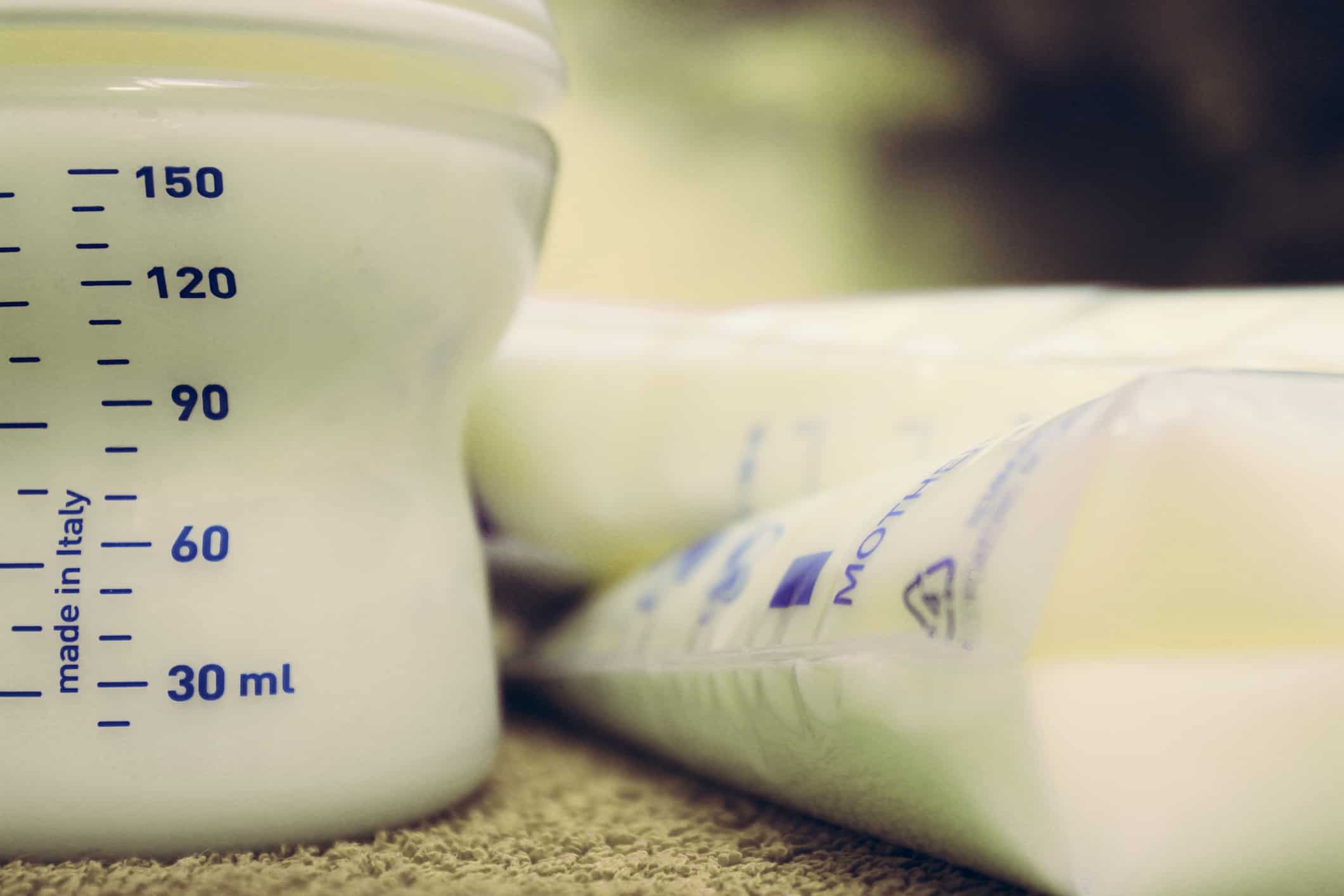
Leave A Comment